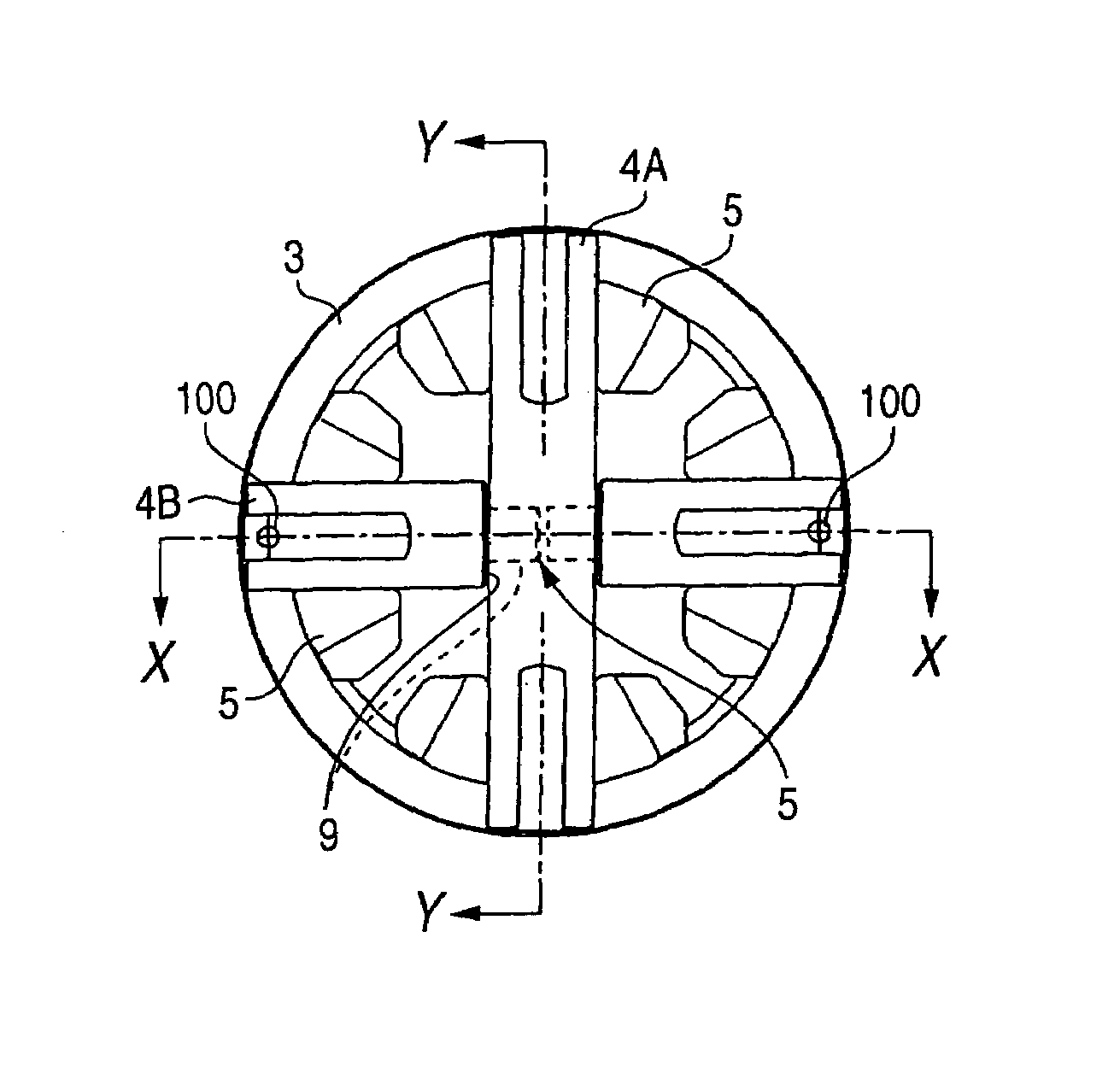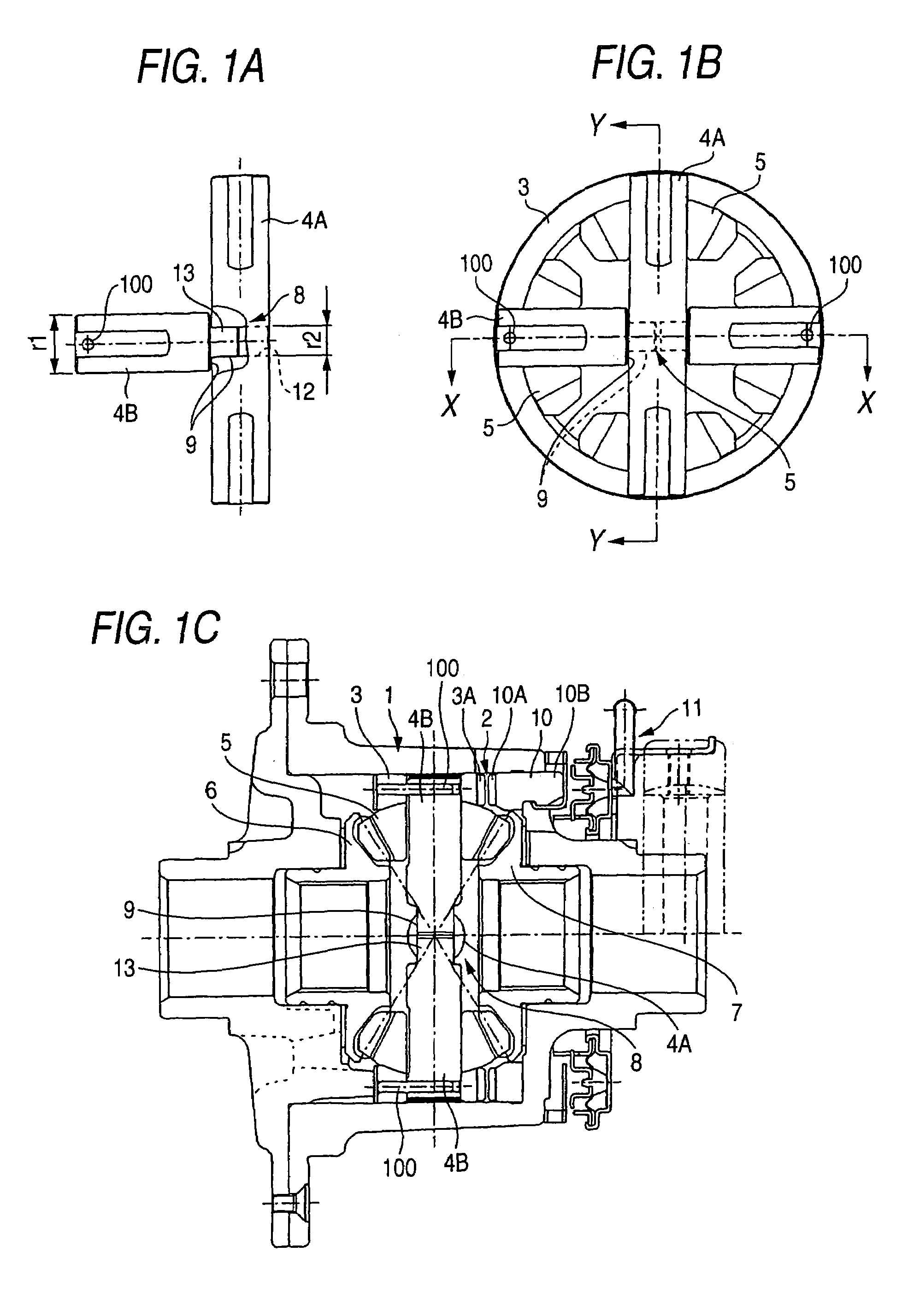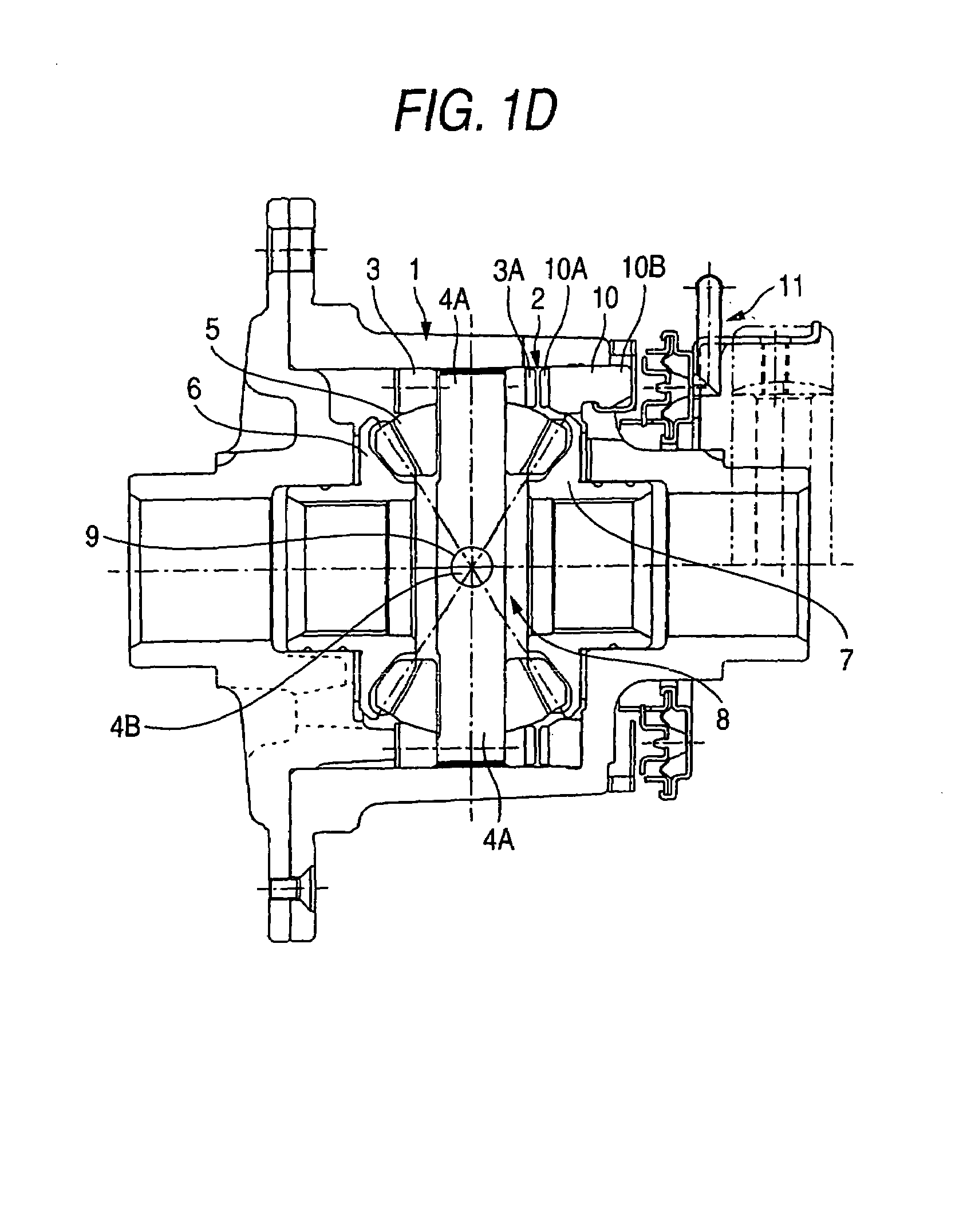Differential apparatus
a technology of differential gearings and gearings, which is applied in the direction of differential gearings, transmission elements, belts/chains/gearings, etc., can solve the problems of high cost and complexity of heat treatment of whole teeth, or the selection of materials with high strength is required for coping with uneven high load, so as to improve the durability of clutch teeth, reduce the number of parts, and high installation accuracy
- Summary
- Abstract
- Description
- Claims
- Application Information
AI Technical Summary
Benefits of technology
Problems solved by technology
Method used
Image
Examples
first embodiment
(First Embodiment)
[0022]FIG. 1A, FIG. 1B, FIG. 1C and FIG. 1D show the differential apparatus according to a first embodiment of this invention, and FIG. 1A shows a junction of pinion shafts, FIG. 1B is a cross sectional view showing the pinion shafts and pinions as attached to an inner differential as an inner rotary member, FIG. 1C is an overall sectional view of the differential apparatus that is taken along a line X—X of FIG. 1B, and FIG. 1D is an overall sectional view of the differential apparatus that is taken along Y—Y of FIG. 1B. This embodiment is one example wherein this invention is applied to a free running differential. In the free running differential it is possible, by the engagement or disengagement of a clutch tooth, to achieve a two-wheel drive mode without transmitting a rotary driving force from a differential case to a differential mechanism comprising a differential gear, or a four-wheel drive mode by transmitting it.
[0023]More specifically, as shown in FIG. 1...
second embodiment
(Second Embodiment)
[0033]FIG. 2A; FIG. 2B, FIG. 2C and FIG. 2D show a differential apparatus according to a second embodiment of this invention. According to this embodiment, a junction 8 in the center of rotation between a long pinion shaft 4A and short pinion shafts 4B comprises, a small diameter portion 14 and an arcuate groove 16, as shown in FIG. 2A. The small diameter portion 14 is formed in the mid-portion of the long pinion shaft 4A. The arcuate groove 16 is formed in the axial end of the short pinion shaft 4B. The arcuate groove 16 contacts the peripheral surface of the small diameter portion 14 in a complementary fashion. The long pinion shaft 4A is fitted in the inner differential 3, and the short pinion shafts 4B are fitted in the inner differential 3 at right angles to the long pinion shaft 4A. And, the short pinion shafts 4B and the inner differential 3 are fixed by pins 100. Accordingly, a uniform power transmitting portion 9 for ensuring and maintaining the perpendic...
third embodiment
(Third Embodiment)
[0039]FIG. 3A, FIG. 3B, FIG. 3C and FIG. 3D show a differential apparatus according to a third embodiment of this invention. According to this embodiment, a junction 8 in the center of rotation between a long pinion shaft 4A and short pinion shafts 4B comprises a pair of grooves 17 formed back to back in the mid-portion of the long pinion shaft 4A for receiving the outside diameter of the short pinion shaft 4B therein in a complementary way. The grooves 17 include bottom surfaces, respectively. Axial end surfaces of the short pinion shafts 4B contact with the bottom surfaces of the grooves 17 of the long pinion shaft 4A. The long pinion shaft 4A is fitted in the inner differential 3, and the short pinion shafts 4B are fitted in the inner differential 3 at right angles to the long pinion shaft 4A. And, the short pinion shafts 4B and the inner differential 3 are fixed by pins 100. Accordingly, a uniform power transmitting portion 9 for ensuring and maintaining the pe...
PUM
 Login to View More
Login to View More Abstract
Description
Claims
Application Information
 Login to View More
Login to View More - R&D
- Intellectual Property
- Life Sciences
- Materials
- Tech Scout
- Unparalleled Data Quality
- Higher Quality Content
- 60% Fewer Hallucinations
Browse by: Latest US Patents, China's latest patents, Technical Efficacy Thesaurus, Application Domain, Technology Topic, Popular Technical Reports.
© 2025 PatSnap. All rights reserved.Legal|Privacy policy|Modern Slavery Act Transparency Statement|Sitemap|About US| Contact US: help@patsnap.com



